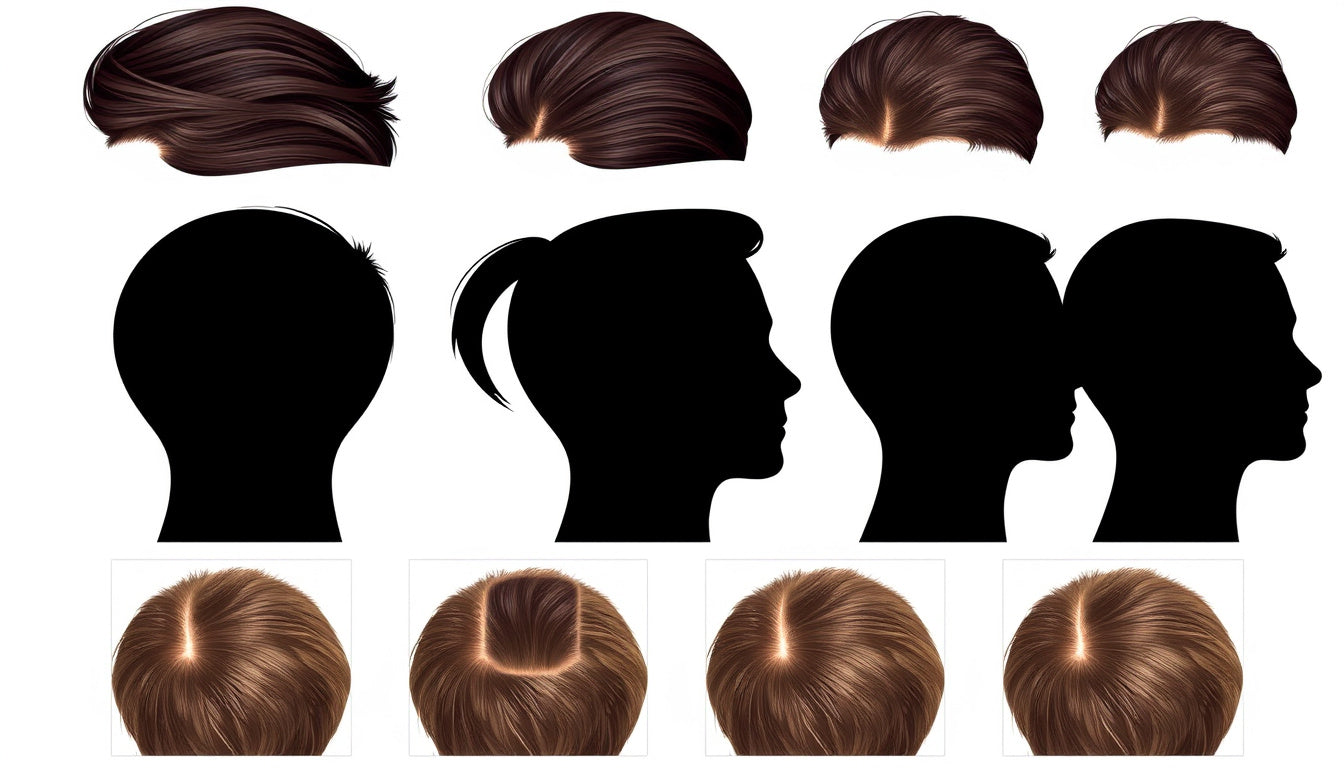
5 Clear Signs Your Hairline is Receding: A Guide to Early Detection and Solutions

Knowing the signs of a receding hairline can help you act early and work to slow hair loss. Your hair is more than a style mark; it shows who you are, how you dress, and how you feel about yourself. If you think your hairline is moving back, see the signs early and act fast. In this guide, we list the signs of a receding hairline, show simple science behind hair loss, and share natural fixes that can help.
What are the Signs of a Receding Hairline?
Noticing hair changes can feel strange. What should you see? Here are five clear signs that your hairline is moving back:
1. Excessive Hair Shedding
You find extra hair on your pillow, in the shower, or on your clothes. This fact shows that more hair falls than usual. It is normal to lose 50–100 hairs a day. Yet, if you see clumps or bald spots, this fact may show that your hair is thinning or your hairline is moving back.
2. Changing Hairline Shape
Watch your hairline closely. A full hairline often has a soft curve like a “U” or “O.” When your hairline shifts and looks more like an “M,” this change may show that hair is falling back at the temples.
3. Thinning at the Temples
Many people see thinner hair at the temples. This area is often the first to show change when the hairline moves back. If you find that hair here feels less thick than it did in the front, you may want to ask a professional for advice.
4. Increased Scalp Visibility
Look in the mirror. Do you now see more of your scalp? When hair falls back, more scalp shows at the crown and temples. Seeing the scalp in these areas may be an early sign of change.
5. Waiting Longer for a Haircut
If your barber or stylist always cuts your hair the same way and you still see less hair, your hair may not be growing back as fast or thick as before. This situation may mean that more frequent cuts are needed to keep your look.
Understanding the Science of Hair Loss
Hair loss comes from genes, hormones, and age. In pattern baldness, hair follicles grow smaller, and hair becomes thinner over time. This process happens slowly. Small changes may be hard to notice unless you pay close attention.
Hormones can also change how hair grows. For example, some women with conditions like PCOS may see less hair because of changes in their hormone levels.
Early Detection and Natural Solutions
If you see several signs that your hairline is moving back, finding them early can let you try new steps to care for it.
Watermans Grow Me Shampoo: The Simple Help
Among many products on the market, Watermans Grow Me Shampoo has a clear formula to work on hair growth and loss. It brings in biotin, caffeine, rosemary, argan oil, and lupin protein. These words mean that the shampoo works on the root and gives your hair more body. If you want to care for your hair well, you can check out Watermans Grow Me Shampoo.
Other Natural Remedies and Tips
Along with using Watermans Grow Me Shampoo, try these steps:
- Healthy Diet: Eat foods with vitamins and minerals. Iron, zinc, and omega-3 fats help hair grow.
- Scalp Massages: A gentle scalp massage can make blood flow better. More blood helps wake up your hair follicles.
- Reduce Stress: Long stress can make hair fall. Try simple acts like yoga or meditation to help you feel calm.
Did You Know?
-
Hair Grows in Cycles: Each hair grows, rests, and falls out. One hair grows for about 2–7 years before it rests.
-
Density, Not Quantity: As you grow older, fewer hair follicles stay. This fact makes the hair look less dense.
-
Men and Women Differ: Men often see their hairline move back. Women may see thin hair spread over the whole scalp.
Frequently Asked Questions (FAQs)
1. At what age do most people start to notice a receding hairline?
Many men see signs in their late teens to early 20s. Women may begin to see thinner hair in their 30s or 40s.
2. Can stress cause a receding hairline?
Yes, long periods of stress can lead to hair loss. The condition known as telogen effluvium shows that stress makes more hair fall out.
3. Is it possible to reverse a receding hairline?
Some treatments may help hair grow and slow down hair loss. Complete reversal is not sure. Early care, such as choosing the right shampoo, can give better results.
4. Are there genetic tests to determine hair loss?
Yes, tests can show if your genes may lead to hair loss. This help can be useful if your family has a history of hair loss.
5. How often should I wash my hair if I notice a receding hairline?
It may vary with hair type. Washing your hair 2–3 times a week keeps your scalp clean without taking away natural oils.
By spotting the signs early and trying these steps, you can work to keep your hair and boost your self-care. Use simple products like Watermans Grow Me Shampoo to give your hair care a fresh start.













